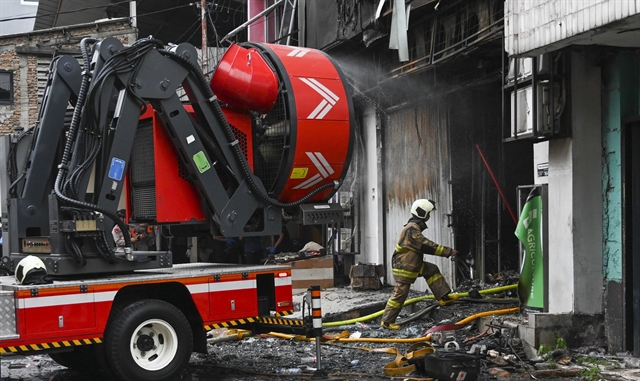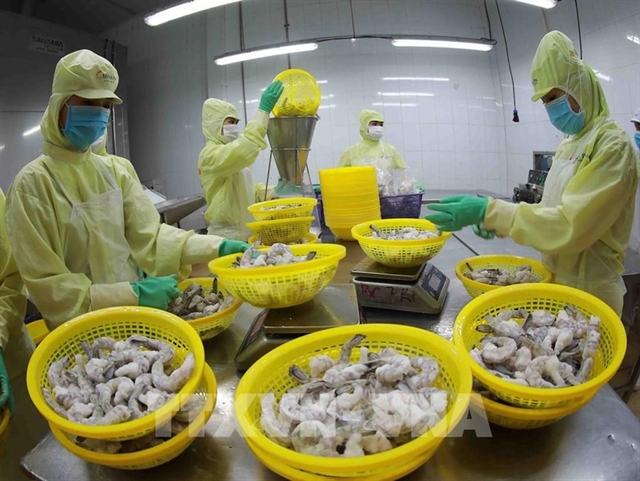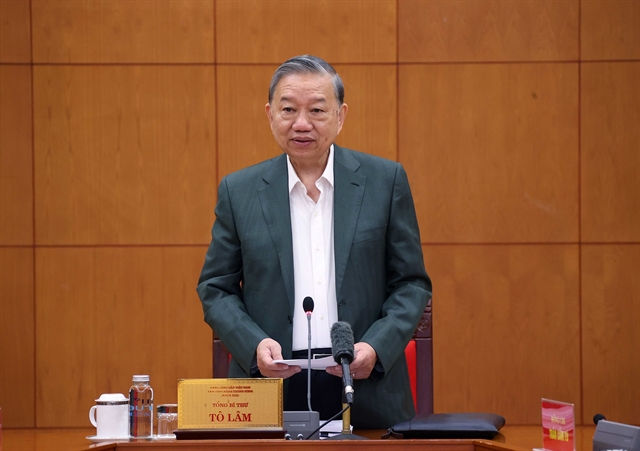 Society
Society

We cannot ignore it: Climate Strike, initiated by 16-year-old activist Greta Thunberg, has spread across the globe, and its impact has been immense.

|
| Flooding in Quảng Bình Province. More floodings have been seen in Việt Nam due to the impacts of climate change. — VNA/VNS Photo |
HÀ NỘI — We cannot ignore it: Climate Strike, initiated by 16-year-old activist Greta Thunberg, has spread across the globe, and its impact has been immense.
The strikes, which have gathered millions of people all over the world to call for climate action, demand that governments stop burning fossil fuels and ensure a rapid energy revolution with equity, reparations and climate justice.
Professional climate change skeptic Marc Morano from the United States, however, mocked the other day that reason for Climate Strike was appealing to young people was because Greta “sells fear”.
He might be true. Climate change impacts should scare our kids, because they will be the ones who bear the consequences in 11 years.
Why 11 years? The United Nations estimates that we have only 11 years left to head off irreversible damage to the Earth’s ecosystems.
And it’s true that Greta does not try to sugarcoat the environmental crisis humans have created – she does sell fear – the fear that not only kids like her should have, but the fear adults themselves should come to terms with. We’ve seen the impacts of climate change already: more killer heat waves, more melting glaciers, more storms and droughts, and rising levels of greenhouse gases raising temperatures worldwide.
Isn’t that scary?
Many world leaders have acknowledged the science.
On September 23, in a video played at the Leaders for Nature and People Event hosted by the World Wide Fund for Nature (WWF) in New York, Vietnamese Prime Minister Nguyễn Xuân Phúc joined other leaders from around the globe in voicing their support for an emergency declaration for nature and people ahead of the 74th session of the UN General Assembly this month.
In his message, PM Phúc said Việt Nam always put climate change response, natural resources management and environmental protection in an important position in its resolutions and policies for development.
It is an urgent challenge, especially for Việt Nam, which is one of the countries most vulnerable to climate change.
According to findings published last month by geographer Philip Minderhoud (Deltares/Utrecht University), land subsidence and rising sea levels threaten to submerge large parts of the Mekong Delta in the next century. In recent years, he has found that the delta is just eighty centimetres above the local sea level, about two metres lower than international researchers often thought on the basis of freely available satellite data.
That makes related problems like salinisation and flooding even more pressing for the 18 million inhabitants of the delta.
The devastating consequences of the climate crisis have already been observed in the area. Vegetation has dried up and wilted from saltwater intrusion, and local residents say none of the fruit is as plump or juicy as it was 10 years ago. That's a massive environmental disaster already for a region that has been teeming with plants, fish and wildlife for thousands of years.
In the past few years, the people of Việt Nam have seen extreme weather events hitting faster than anticipated; more intense, more frequent and more difficult to predict. The losses have been huge.
Is that the legacy we’re going to leave our children – who we say we love and would do anything for?
Are we going to sit here and watch them taking to the streets to defend their future all by themselves? Are we leaving them to deal with the fight against ignorance and complacency?
While it’s good that you think of switching to high-efficiency light bulbs or using electric cars, it’s not enough to tackle climate change. Many people have already started using natural climate solutions – but we need to do it on a massive scale.
We have to voice up to persuade individuals, policymakers and businesses to reduce our carbon footprint, as a whole.
As Prime Minister Phúc said, the climate policy framework of Việt Nam is quite comprehensive at national and local levels. The National Climate Change Strategy in 2011 sets a number of targets that after every 10 years, it will reduce GHG emission from agriculture by 20 per cent, and increase the national forest coverage rate to 44-45 per cent by 2020.
For mitigation of GHG emissions, Việt Nam has committed that by 2030, it will reduce 8 per cent of GHG emissions compared to the Business-as-Usual (BAU) levels when using its own resources, and up to 25 per cent when receiving international support.
They're aggressive commitments, but in order to be able to reach that target, Việt Nam has a lot to do.
For instance, coal currently accounts for 35 per cent of the country's primary energy supply, 15 per cent higher than in 2000. By 2035, Việt Nam's coal demand is likely to grow nearly 2.5 times. As few substitutes are being adopted, the country will rely more on imported coal and it will be difficult to achieve the 8 per cent reduction target by 2030.
However, given the rising demand for power, the Ministry of Trade has started to offer favourable conditions for renewable energy in Việt Nam, which now only plays a small role in the country’s energy sector.
Dieter Billen, a principal consultant at Roland Berger, told Reuters that if government policy continued to support renewables and wind and solar become cheaper and better, renewables could even challenge coal as Việt Nam’s biggest electricity source by 2030.
Will Việt Nam be able to complete its promise? It’ll take the whole nation to act.
Let’s act in any way we can to spread the message, whether it’s cutting down on food waste, restoring our forests, building more solar farms or flying less. Let’s not make it beautiful talk and initiatives – because climate inaction is violence, when our children’s lives, air and future are on the line. — VNS




